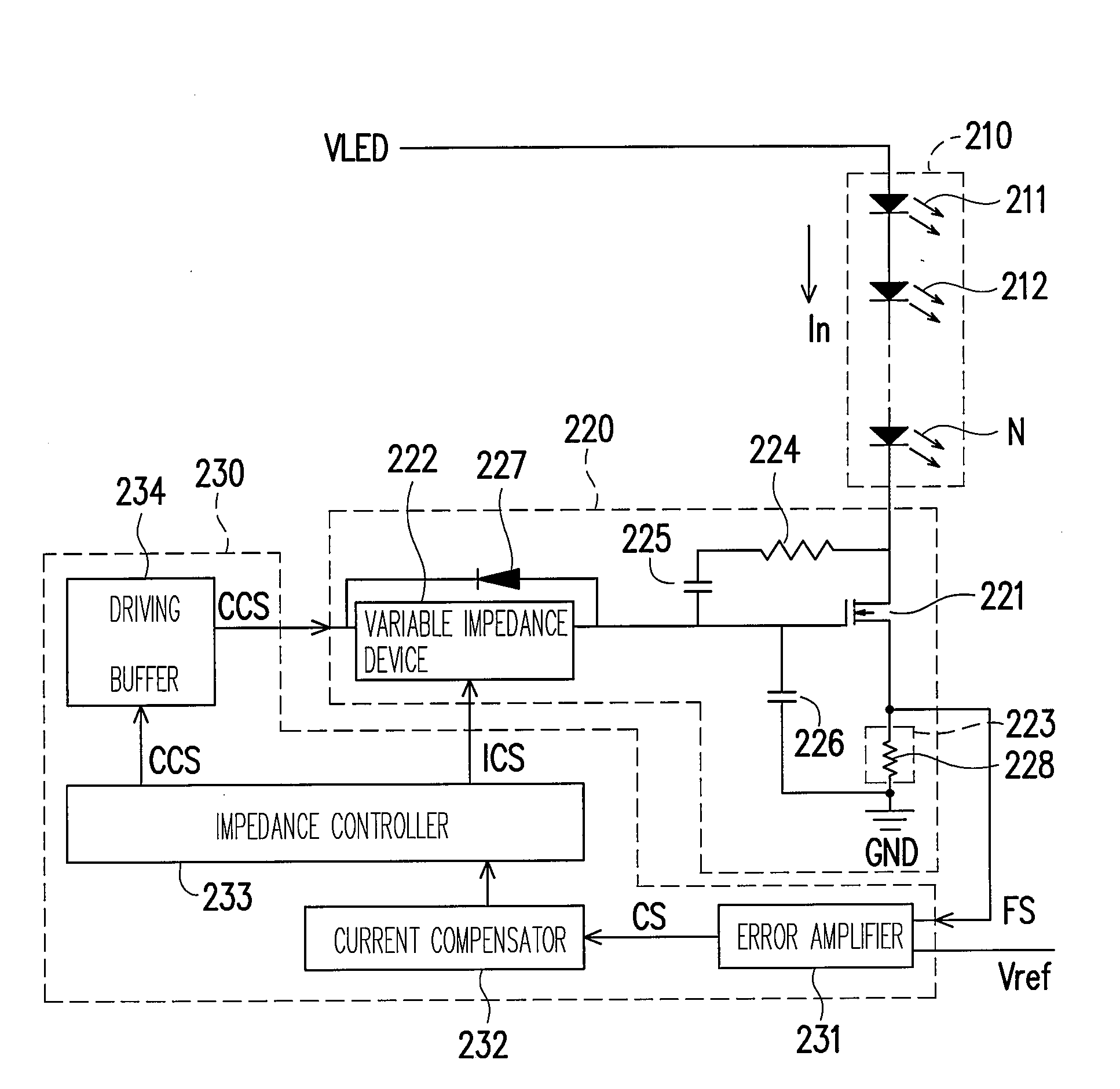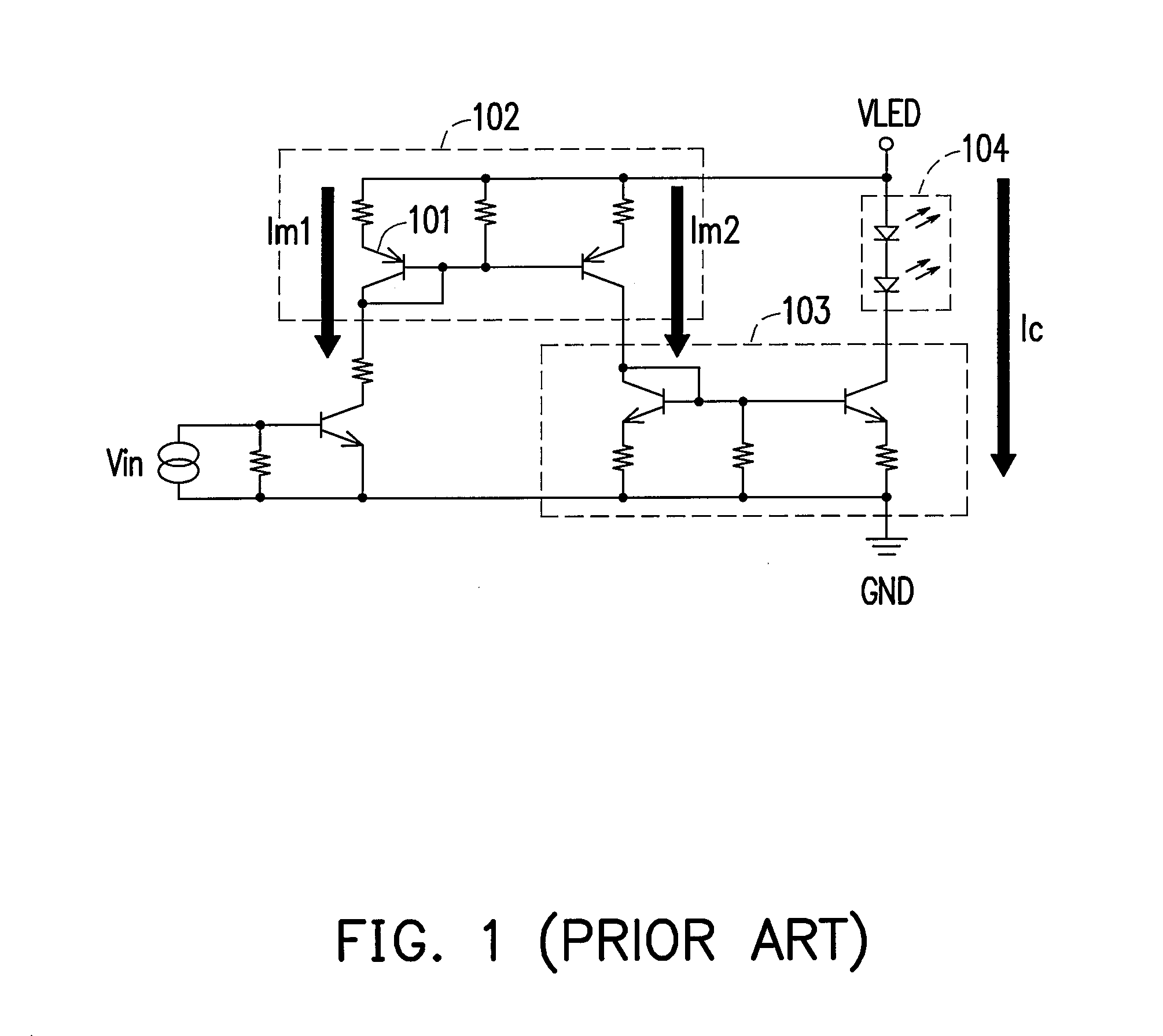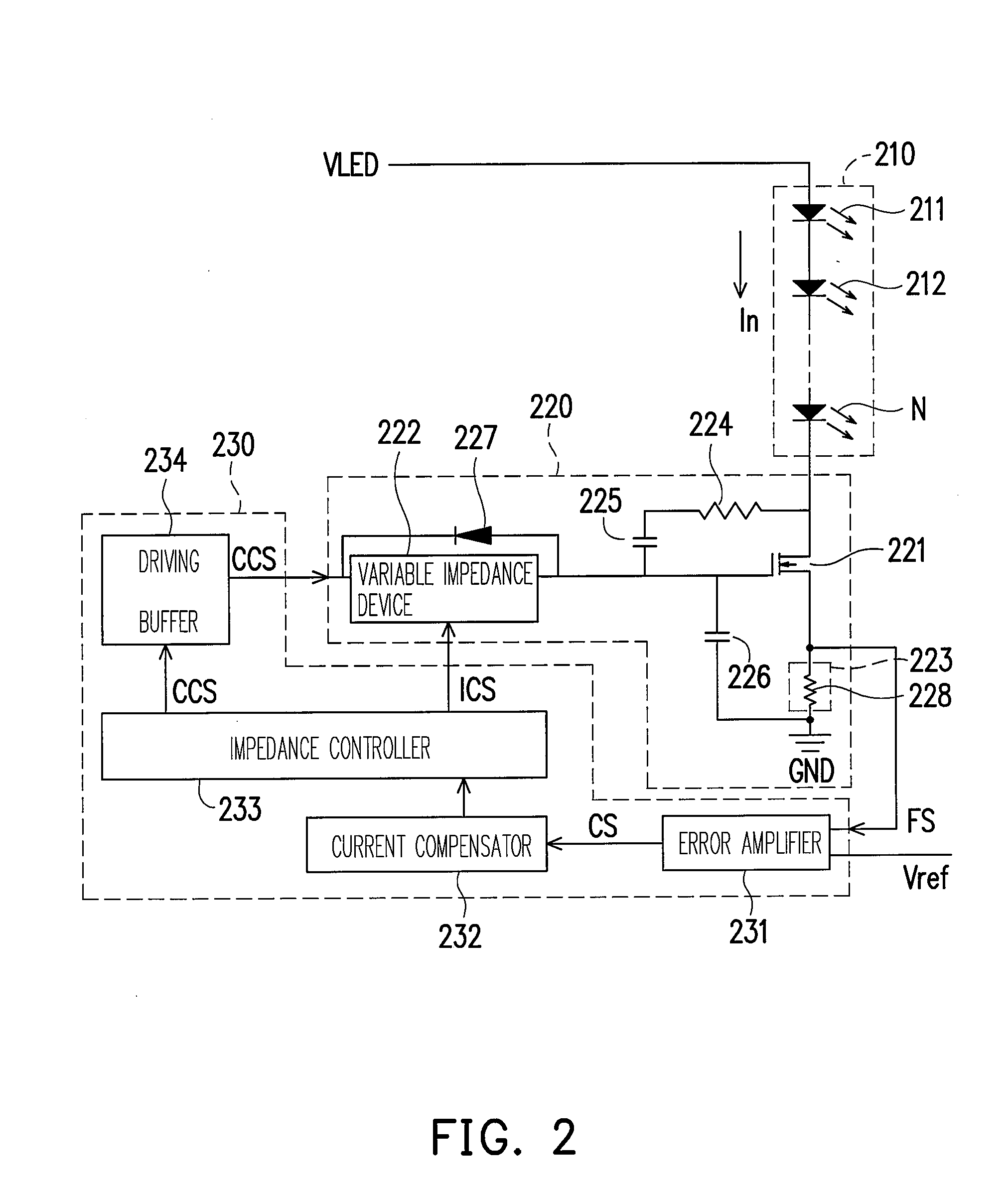Current-controlling apparatus
- Summary
- Abstract
- Description
- Claims
- Application Information
AI Technical Summary
Benefits of technology
Problems solved by technology
Method used
Image
Examples
Embodiment Construction
[0026]FIG. 2 is a current-controlling apparatus according to an embodiment of the present invention. Referring to FIG. 2, the current-controlling apparatus is suitable for controlling the current In passing through the LEDS 210. In the embodiment, the LEDS 210 is formed by LEDs 211, 212˜N and an end of the LEDS 210 is electrically connected to a power voltage VLED (i.e. a first voltage level). The present invention, however, does not limit the LEDS 210 to be formed by LEDs only.
[0027]The current-controlling apparatus includes a current-adjusting unit 220 and a control unit 230. The current-adjusting unit 220 is used for detecting the current In of the LEDS 210, producing a feedback signal FS hereby and controlling the impedance between the LEDS 210 and the grounding voltage GND (i.e. the second voltage level) according to a conductance-controlling signal CCS and an impedance-controlling signal ICS, and further controlling the current In of the LEDS 210. The control unit 230 is used ...
PUM
 Login to View More
Login to View More Abstract
Description
Claims
Application Information
 Login to View More
Login to View More - R&D
- Intellectual Property
- Life Sciences
- Materials
- Tech Scout
- Unparalleled Data Quality
- Higher Quality Content
- 60% Fewer Hallucinations
Browse by: Latest US Patents, China's latest patents, Technical Efficacy Thesaurus, Application Domain, Technology Topic, Popular Technical Reports.
© 2025 PatSnap. All rights reserved.Legal|Privacy policy|Modern Slavery Act Transparency Statement|Sitemap|About US| Contact US: help@patsnap.com



